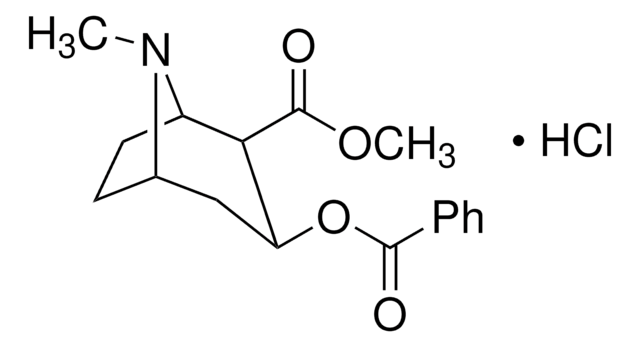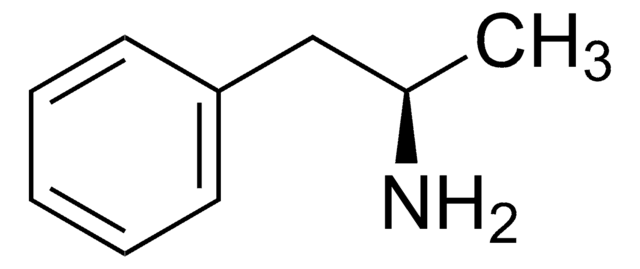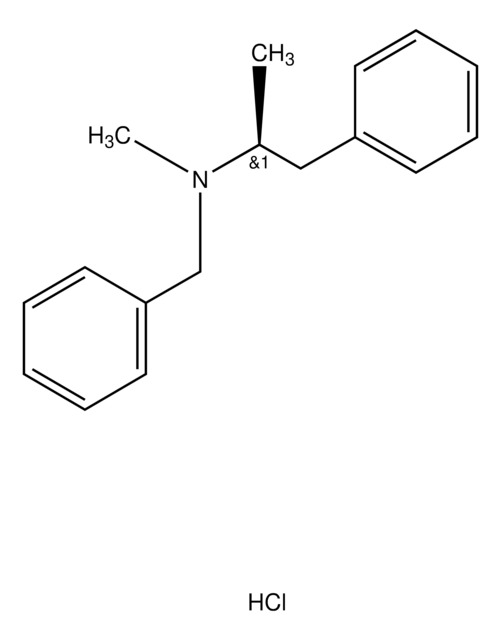A1263
DL-Amphetamine sulfate salt
Sinónimos:
(±)-α-Methylphenethylamine sulfate salt
About This Item
Productos recomendados
form
powder
Quality Level
drug control
USDEA Schedule II; Home Office Schedule 2; stupéfiant (France); kontrollierte Droge in Deutschland; regulated under CDSA - not available from Sigma-Aldrich Canada
application(s)
forensics and toxicology
SMILES string
OS(O)(=O)=O.CC(N)Cc1ccccc1.CC(N)Cc2ccccc2
InChI
1S/2C9H13N.H2O4S/c2*1-8(10)7-9-5-3-2-4-6-9;1-5(2,3)4/h2*2-6,8H,7,10H2,1H3;(H2,1,2,3,4)
InChI key
PYHRZPFZZDCOPH-UHFFFAOYSA-N
¿Está buscando productos similares? Visita Guía de comparación de productos
Application
Biochem/physiol Actions
signalword
Danger
Hazard Classifications
Acute Tox. 2 Inhalation - Acute Tox. 2 Oral - Aquatic Chronic 3 - Repr. 2 - STOT RE 2 - STOT SE 3
target_organs
Brain, Respiratory system
Storage Class
6.1A - Combustible acute toxic Cat. 1 and 2 / very toxic hazardous materials
wgk_germany
WGK 3
flash_point_f
Not applicable
flash_point_c
Not applicable
ppe
Eyeshields, Faceshields, Gloves, type P2 (EN 143) respirator cartridges
Certificados de análisis (COA)
Busque Certificados de análisis (COA) introduciendo el número de lote del producto. Los números de lote se encuentran en la etiqueta del producto después de las palabras «Lot» o «Batch»
¿Ya tiene este producto?
Encuentre la documentación para los productos que ha comprado recientemente en la Biblioteca de documentos.
Chromatograms
suitable for GCsuitable for GCsuitable for GCNuestro equipo de científicos tiene experiencia en todas las áreas de investigación: Ciencias de la vida, Ciencia de los materiales, Síntesis química, Cromatografía, Analítica y muchas otras.
Póngase en contacto con el Servicio técnico








